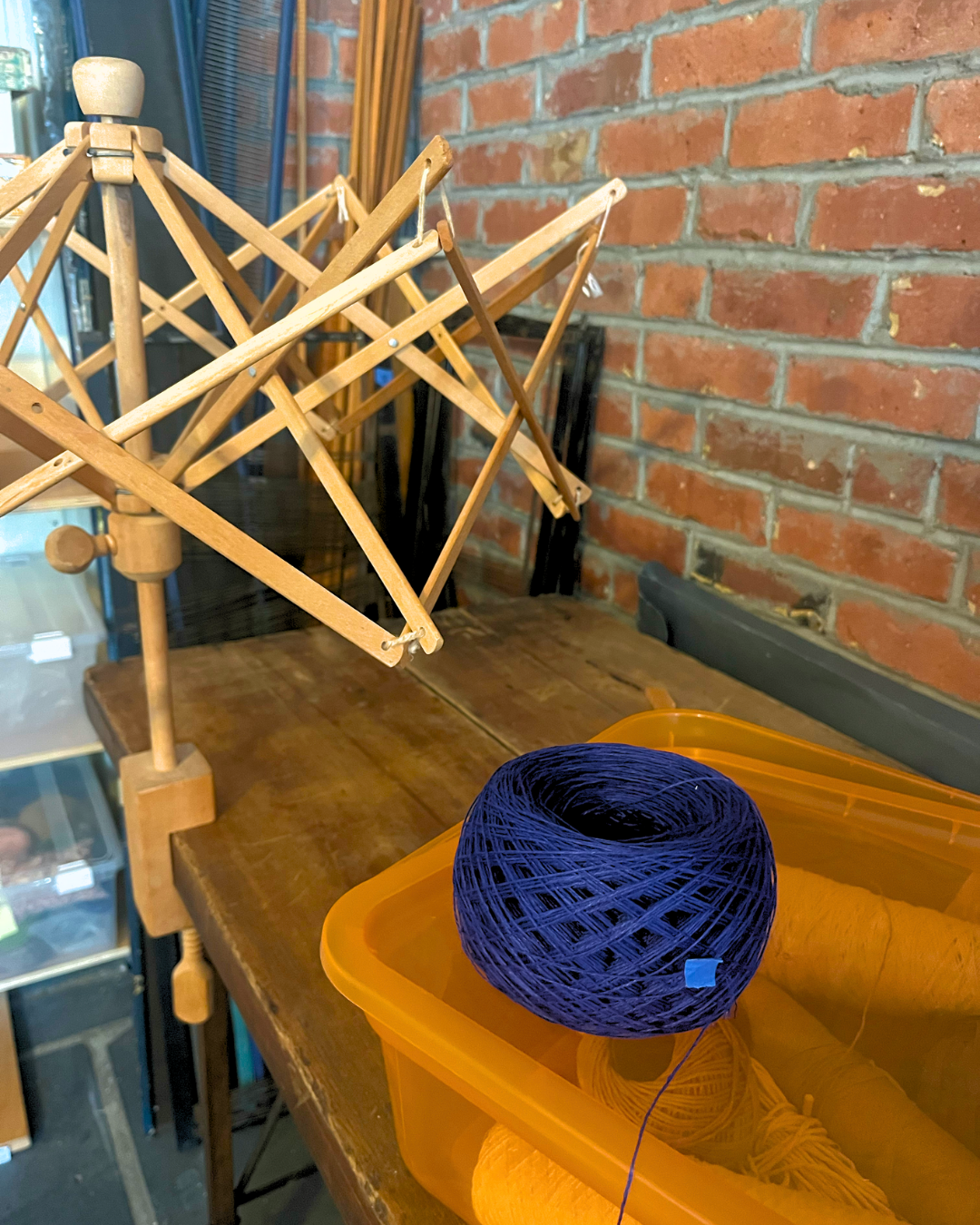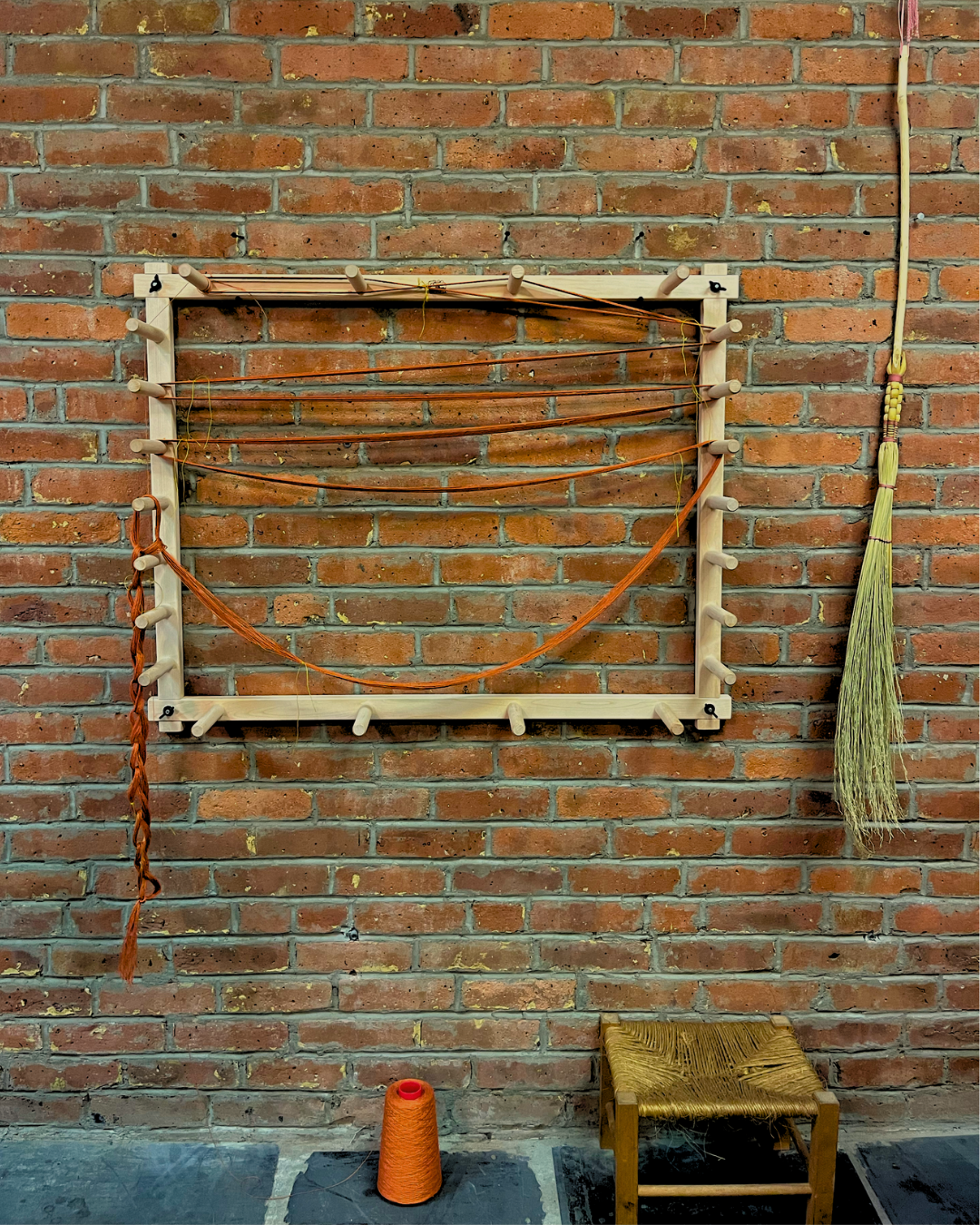< textiles
a body of work / research + archival listening project orbiting around the woven radio — an idea which has been perpetually waiting in the wings since 2020, when I first started weaving on a floor loom and concurrently learned about crystal radio receivers, which are powered only by the energy from the radio signal itself and can produce sound without external power sources.
I want to first thank and acknowledge the work of the shortwave collective, whose wonderful open-wave receiver design was an open, exciting, and accessible point and ethos to jump off of in these textile explorations. I’d encourage everyone to have a look at their Make Zine article and broader work.
a thousand thanks also to Tanglehaven in Troy, NY, for the gift of three weeks in residence to focus on this idea on the loom in September 2025.
As the project evolves with new iterations and as more archived recordings are collected, this page will be updated intermittently.
Springing not just from the shared history of textiles and technology but more specifically the overlaps of handcraft and DIY movements, it attempts to integrate soft circuitry and woven material into the shortwave collective’s open-wave receiver design. It draws on two different lineages of collaborative learning and collective knowledge building, bridging open source design and weaving patterns passed through generations and communities of weavers via drafts / notation. Both lay out roadmaps along with flexibility for interpretation, material and play.
Utilizing different conductive threads across the warp, I wove nine yards of soft antenna in a waveform pattern adapted from the “Tennessee Trouble” coverlet draft. The body of the radio pairs woven circuitry and a pyrite diode with a coil wound on to a bobbin. The radio receiver inhabits a softer and more traditionally ‘domestic’ space, resisting, collapsing and playing with a mass medium that has as much capacity for delight and connection as it does for harm (historically, presently and in the other advances of wireless communications).
The beauty of the open-wave receiver design is its variability and imprecision — signals drift in and out, speak over each other, shift with time, weather, materials and place, and react to human touch to the antenna. As a literal “longtime listener”, this project excited me most as a combination of deep listening with slow craft, situated in opposition to hyper-efficiency, the attention economy and algorithms that dominate much of our listening and lives. There is no instant gratification, but there is space for serendipity, silence, shock, the absurd, and the mundane all across the spectrum for those who tune in and listen.





